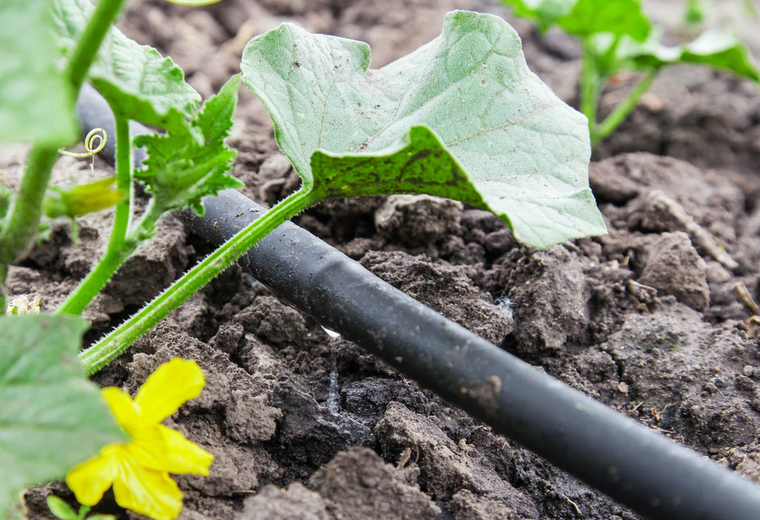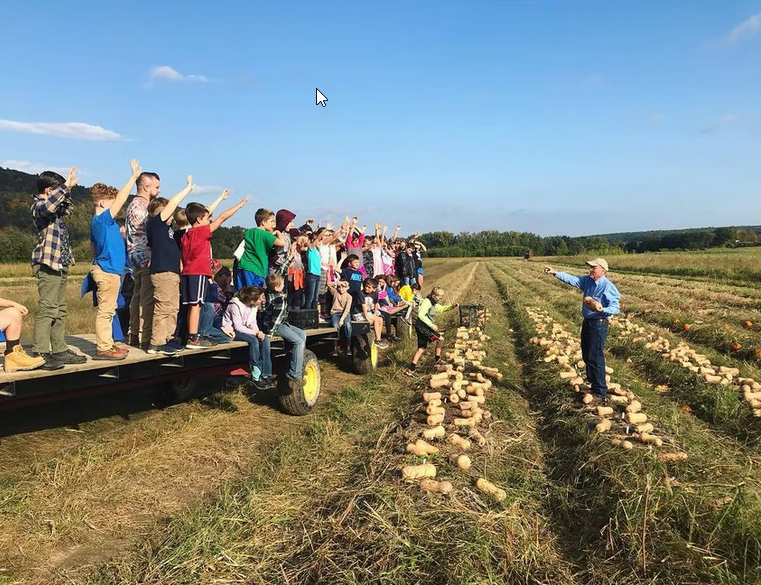How is it that produce fresh from the farm and grown in the soil reaches the grocery store safe and ready to eat? In this edition of our Food System Series, NASDA President, New York Commissioner of Agriculture and seasoned farmer, Richard A. Ball, answers this question for us, shares background on our food safety regulatory system and the newest development to preventing foodborne illnesses.
Partnerships for Prevention
State departments of agriculture are the front line of protection for consumers when it comes to food safety, and 45 state agriculture departments have partnerships with the U.S. Food and Drug Administration (FDA) to implement produce safety. The NASDA Foundation and the FDA also maintain a partnership to ensure and advocate for the safety of produce and animal feed food systems in the United States. As part of that partnership, NASDA has a cooperative agreement, in which the NASDA Foundation works with the FDA and state agencies to produce and distribute tools that assist in implementing produce safety rules within the U.S.
Ball shares that working cooperatively with farmers and the federal government is what has most effectively paved the way for safer food and more successful farmers.
“We and FDA share an interest and a common goal in having a safe food supply for New Yorkers and all Americans,” Ball says. “We understand that food safety is everyone’s business.”
By providing this connection between farms, states and federal levels of government, the NASDA Foundation helps farmers to adopt the best practices for keeping produce safe from bacteria and meeting safety standards required by the Food Safety Modernization Act (FSMA).
Commissioner Ball says that FSMA represents a change in how we approach food safety, shifting from simply reacting to foodborne outbreaks to preventing them.
“Our priority here in New York and across the country in having NASDA work with FDA to implement FSMA is, first of all, to make sure that FSMA is achievable for our growers and producers,” Ball says. “Through FSMA, we have an opportunity to move to a more integrated and preventative strategy around food safety on the farm.”

Irrigation system on a farm in New York. Photo courtesy of New York Department of Agriculture and Markets.
Education Before Regulation
NASDA adopted a motto that “educating before regulating” is necessary for a fair and effective food safety system in the United States.
After the enactment of FSMA, a team comprised of NASDA, state, FDA and Cooperative Extension food safety leaders developed the On Farm Readiness Review (OFRR) training. Designed to move farmers away from the audit checklist scheme, the OFRR is meant to foster a dialogue between the farmer and the regulator and/or educator about the requirements of the FSMA Produce Safety Rule. This dialogue unfolds in two steps.
First, over the course of a couple of hours, scheduled at the convenience of the farmer, the reviewer observes growing conditions, harvesting practices, packinghouse operations, water sources and discusses common food safety touchpoints.
Second, at the end of the review, the assessor provides suggestions to the farmer that would improve the farm’s food safety practice. The farmer also receives educational materials and resources to assist with solutions to achieve compliance with FSMA. Overall, this program has been designed to also educate the farmer on the inspection process and provide a level of comfort with the new requirements imposed by FSMA.
There are currently 44 states that participate in On-Farm Readiness Reviews, and since its inception in 2017, more than 600 state, university and FDA staff have participated in OFRR trainings. NASDA also continues to build on the program through hosting an annual National Produce Safety Consortium, practice scenarios and informational webinars.

Commissioner Ball at a farm-to-school event in New York. Photo courtesy of New York Department of Agriculture and Markets.
FSMA Agricultural Water Rule – The next step for our preventative food safety system
When the FDA finalizes its proposed FSMA Agricultural Water Rule, the NASDA Foundation will work with the FDA to educate producers and state and academic partners on the new rules and, above all, ensure our food supply remains safe. This proposed rule is set to replace the Product Safety Rule’s pre-harvest microbial quality criteria and streamline testing. If finalized in a similar fashion to the proposed rule, the Ag Water Rule will allow assessments used for agricultural water to be more specific to the farm approach rather than a one-size-fits-all approach. The NASDA Produce Safety team has already co-hosted webinars where 450 guests were able to gain knowledge and ask questions to obtain a deeper understanding of the proposed Ag Water Rule.
“The water rule is a step toward helping farmers assess risk on their farms by utilizing a risk-based approach to the way we grow, harvest, wash, store, and ship produce. Ultimately, this is another step in helping us put the ‘risk-based glasses’ on when looking at our farm operations in New York State and nationwide, and it is doable for our farmers,” Ball says.
“This water rule uses a risk-based approach by identifying risk on the farm and controlling it right at the source, all of which makes good sense and will help our food supply chain be more flexible and resilient, and benefit all,” Ball says. “A strong, risk-aware, preventive food system is a benefit to everyone, from the folks who are growing and producing our food, to the ones who are cooking it and putting it onto the dinner table.”
NASDA is a nonpartisan, nonprofit association which represents the elected and appointed commissioners, secretaries and directors of the departments of agriculture in all 50 states and four U.S. territories. NASDA enhances American food and agricultural communities through policy, partnerships and public engagement. To learn more about NASDA, please visit www.nasda.org.
In the coming weeks, make sure to check back in on our Food Systems Series and follow NASDA on social media for an in-depth look at how state agriculture departments support food systems.
